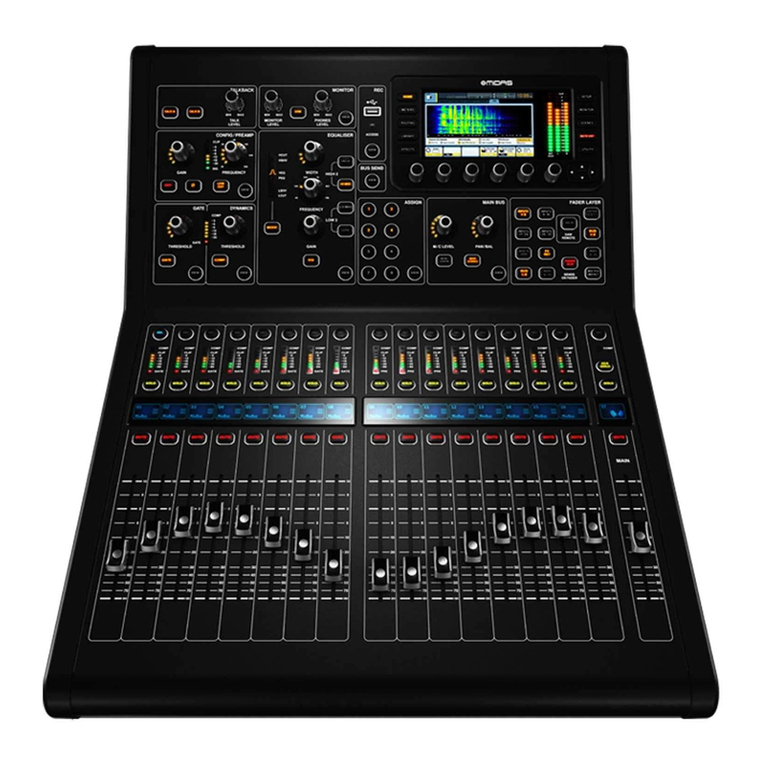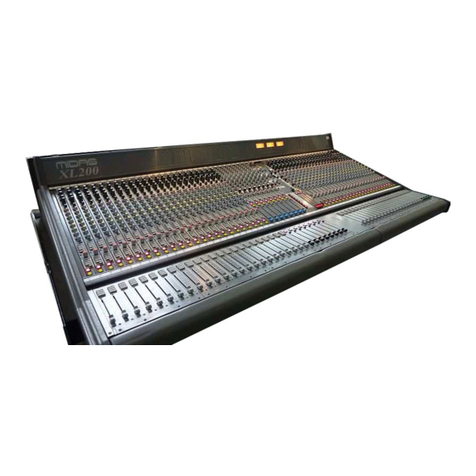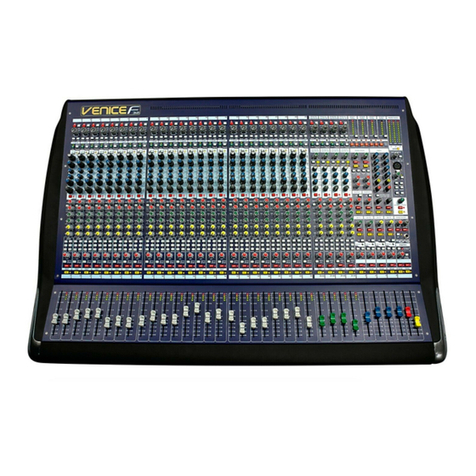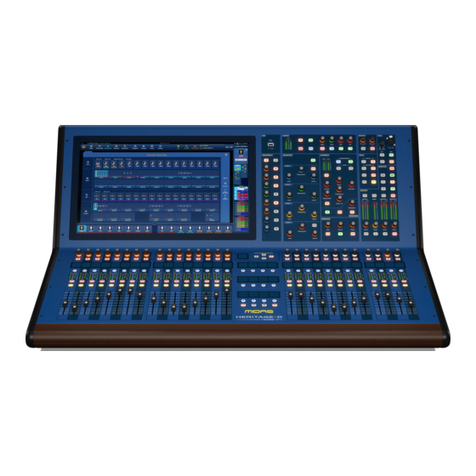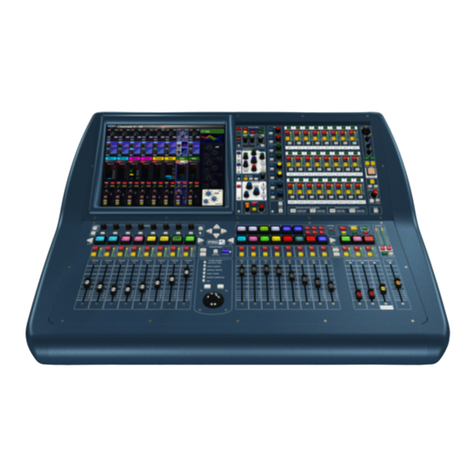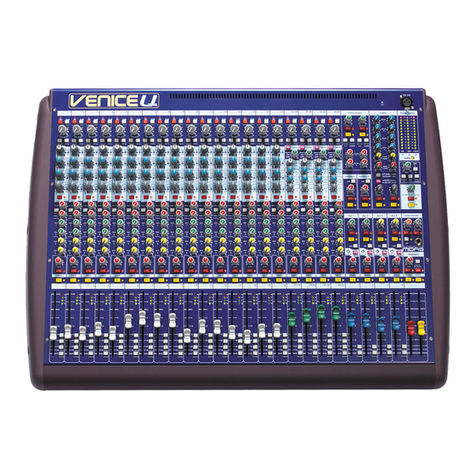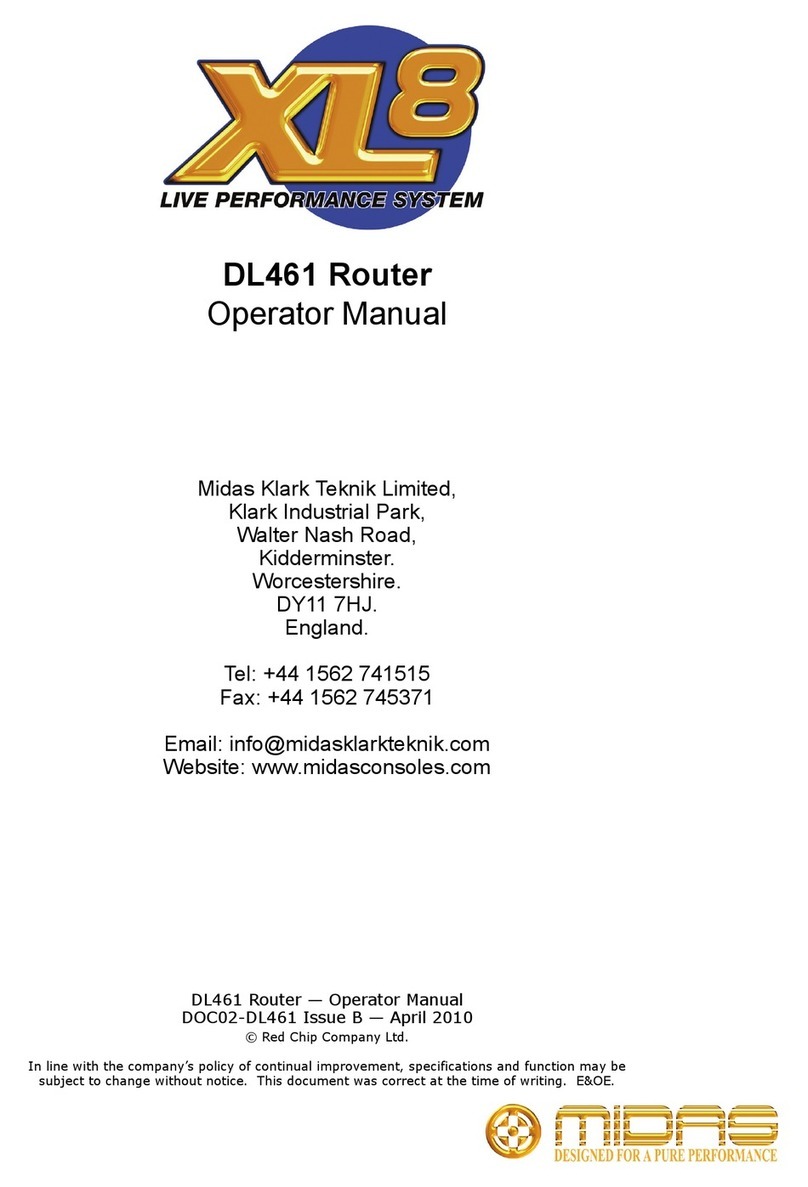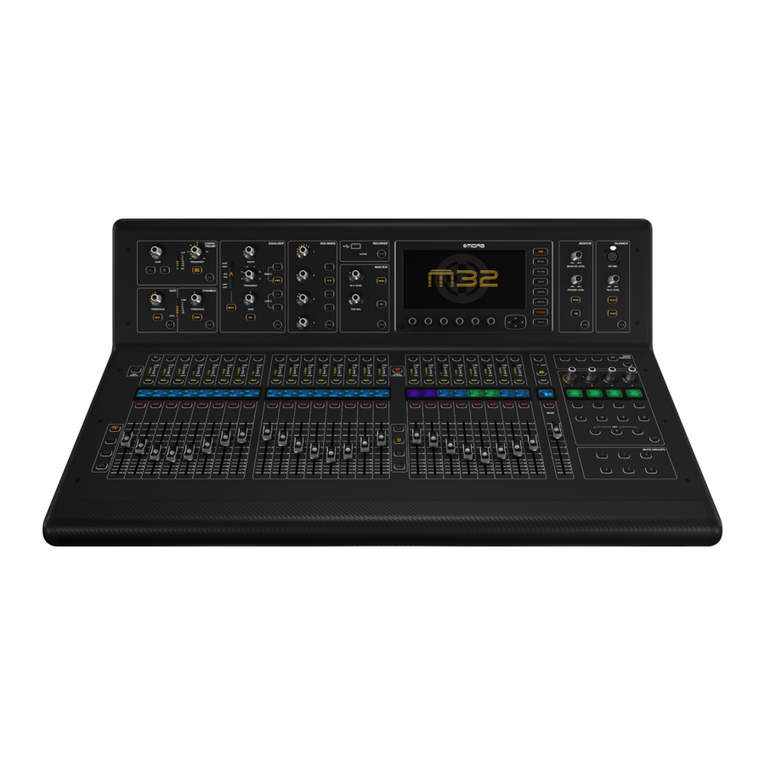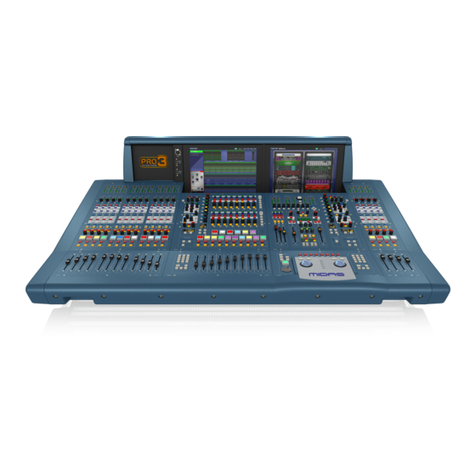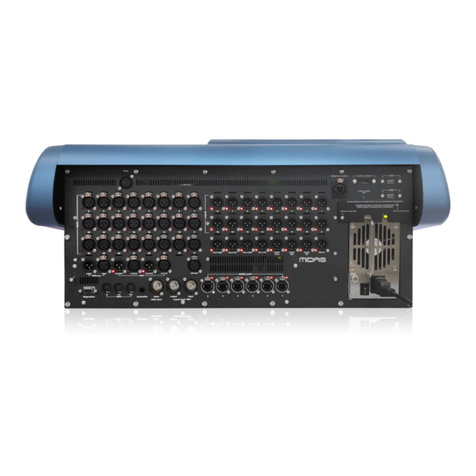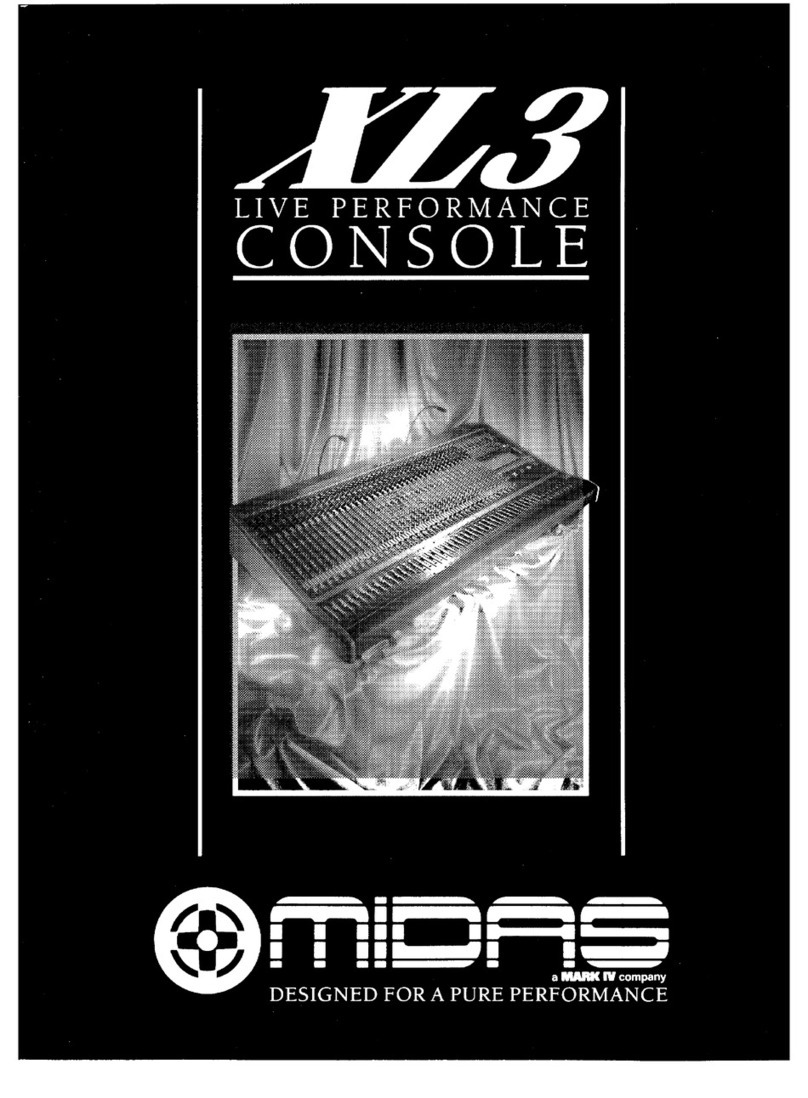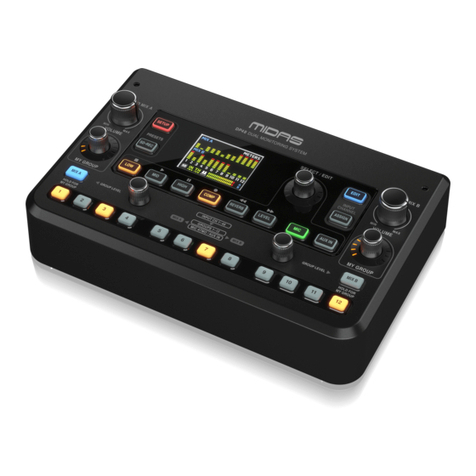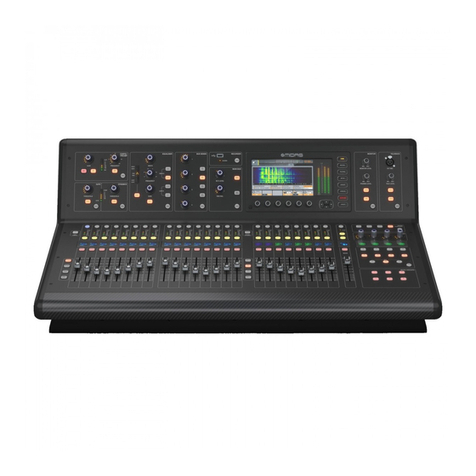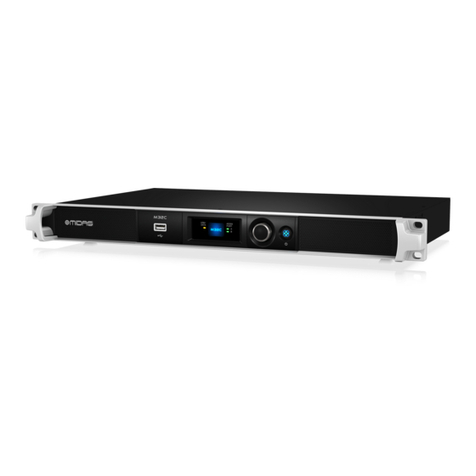
Midas XL200 Features
Mic Inputs.
The XL200 features astate of the art Analogue Devices™ mic amplifier which
assures low distortion and excellent amplifier stability, RF rejection and noise
performance.
Line inputs.
Aseparate Hi Zline input is incorporated which is ideal for playback of recorded
material.
Direct Outputs.
Every input module is fitted with adirect output as standard making multi-track
recording asimple task.
Equaliser.
The sonic performance of the legendary Midas equaliser is maintained including
parametric mid’s with sweepable frequency and switched ‘Q’. The treble and bass
sections have the traditional Midas wide frequency range shelving characteristic.
Inserts.
Each channel has ahalf normalised fully balanced insert send and return point which
can be switched in or out from the front panel and set as either pre or post equaliser.
Input metering.
These peak reading meters cover a30dB range in 3dB steps and monitor pre fader
signals.
Audio busses.
Each channel can be routed to any combination of 21 audio busses comprising of 8
aux’s, 6mono groups, 2stereo groups 2stereo masters and 1mono master. All
switchable on the module front panel.
VGA and mute busses.
Each channel can be controlled by any combination of the 8VGA master faders and
8mute masters. Assignment of these busses is again switchable on the module front
panel. Mutes may also be controlled by the optional automation system. Asafe
switch disconnects the channel from all mute groups.
Audio groups.
The main audio groups may also be assigned to any of the 8automute groups. Asafe
switch is again included for each group. The input for the groups is derived from the
10 group busses.
Master.
The master module provides the main left, right and mono console outputs. Asolo to
master facility is incorporated on the left and right outputs to aid the engineer at
sound checks.



